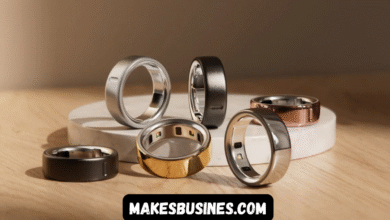Introduction to Simp City Forum
Simp City Forum The internet is a vast and diverse ecosystem of communities, ideas, and platforms that cater to various interests. Among these spaces, some forums and websites gain attention not for their innovation or utility but due to controversy and the debates they generate. One such digital environment is the Simp City Forum. It has been the subject of intense scrutiny, discussion, and critique, particularly concerning its role in online culture, privacy, and digital ethics. As online communities evolve, forums like Simp City challenge conventional boundaries, raising critical questions about consent, anonymity, and internet governance.
The Rise of Underground Forums
The emergence of underground forums has long been associated with niche internet subcultures. These digital forums often operate outside the mainstream social media ecosystem, creating environments where users can communicate with fewer restrictions Simp City Forum emerged within this landscape, functioning as a semi-anonymous hub with content that pushed the boundaries of social norms. These types of forums often attract users who prefer uncensored or unfiltered communication, but with that freedom comes the risk of abuse, exploitation, and illicit activity.
Simp City Forum gained traction not by offering tech innovation or community empowerment, but rather by marketing itself as a space for controversial user-generated content. Its popularity among certain online groups highlighted a growing subculture that glorified voyeuristic behavior, sometimes at the expense of others’ privacy. The dynamics of such communities have always sparked fierce debate about the line between free speech and ethical responsibility in digital spaces.
The Origin and Nature of Simp City Forum
Simp City Forum, as the name suggests, plays on modern internet slang. The term “simp” evolved over recent years to describe someone who is overly submissive, often in romantic or sexual contexts, to another person, typically with little reciprocation. Simp City Forum exploited this terminology, branding itself as a place where explicit, personal, or private content could be shared and discussed, often without the consent of the individuals involved.
This practice drew significant criticism. Many accused the forum of being a hotbed for doxxing, revenge content, and non-consensual sharing of intimate material. While the forum maintained a veil of legality by enforcing certain surface-level rules, the environment encouraged a culture that largely ignored ethical boundaries. The moderators and administrators often claimed neutrality, suggesting that they were merely hosting content provided by users. However, critics argued that the forum’s design, moderation strategy, and user incentives enabled systemic abuse.
Anonymity and the Problem of Accountability
One of the defining characteristics of Simp City Forum was the anonymity it afforded its users. Anonymity on the internet can be a double-edged sword. On one hand, it enables individuals to express themselves freely without fear of retribution or judgment. On the other hand, it provides cover for those who wish to engage in harmful or illegal behavior without consequence.
In the case of Simp City Forum, anonymity shielded users who shared non-consensual content or spread personal information about others. Victims often found themselves powerless to respond or seek justice, particularly when the forum’s servers were hosted in countries with lenient data laws or where enforcement of digital rights was weak. This lack of accountability became a hallmark issue for critics and digital rights organizations calling for stronger international cooperation and cyber laws.
Community Dynamics Within the Forum
Like many forums, Simp City developed its own internal culture. This included shared jokes, references, and a hierarchy of users based on activity or status. These social mechanics helped reinforce the forum’s ethos and contributed to its longevity. Users would often seek validation through attention, likes, or responses from others within the community, which in turn encouraged the posting of increasingly risky or controversial content.
The psychological dynamic within such spaces is worth noting. Forums like Simp City often thrive on a sense of rebellion against perceived societal norms. Users may justify their actions by painting themselves as challengers to hypocrisy or censorship. However, this rationalization ignores the real harm inflicted upon individuals whose content was shared without consent. The gamification of exploitation and the dehumanization of victims became central to how the forum operated.
Law Enforcement and Digital Ethics
Over time, Simp City Forum drew the attention of cybersecurity experts, law enforcement, and digital watchdogs. The increasing pressure from advocacy groups and public outcry led to multiple attempts to shut the forum down. In some instances, domain providers or hosting services were contacted, leading to temporary takedowns or disruption of service. However, like many underground forums, Simp City often resurfaced on mirror domains or migrated to new servers.
The cat-and-mouse dynamic between such forums and authorities reveals the limitations of current digital enforcement mechanisms. While larger platforms like Facebook or Twitter have the resources and infrastructure to implement robust moderation, underground forums often escape scrutiny due to their decentralized nature and use of obfuscation tools. This raises broader concerns about the need for updated international laws on digital conduct, particularly when harm crosses borders and jurisdictions.
The Role of Media and Public Perception
Media coverage played a significant role in bringing Simp City Forum into the public eye. Investigative reports, victim testimonies, and digital watchdog reviews helped shape the narrative surrounding the forum. Often, these reports sparked outrage and further fueled debate about online safety, consent, and the need for digital literacy.
The language used in media reports varied, with some publications taking a more technical approach and others focusing on emotional or victim-centered stories. In both cases, the coverage reinforced the idea that digital platforms, no matter how obscure, can have real-world consequences. Victims of content leaks from Simp City Forum frequently faced personal and professional repercussions, including harassment, job loss, or emotional trauma. These stories added urgency to the public dialogue around digital responsibility and regulation.
Internet Subcultures and the Dark Side of Digital Freedom
Simp City Forum exemplified one of the more troubling corners of internet subculture. While many online communities bring people together in positive, constructive ways, there remains a darker side to digital freedom. Some subcultures thrive on disruption, shock value, or the violation of norms. The anonymous and decentralized nature of the internet provides a breeding ground for these groups to organize, recruit, and influence behavior.
The glamorization of rebellion in online spaces can lead to desensitization. Over time, users of such forums may begin to see harmful actions as mere entertainment or expression. This detachment from the consequences of one’s actions is exacerbated by the digital environment where feedback loops often reward cruelty over compassion. Such psychological trends within communities like Simp City Forum should be studied to inform better prevention and moderation strategies.
Countermeasures and Advocacy Movements
In response to the rise of problematic forums like Simp City, advocacy groups, tech companies, and individuals have begun implementing countermeasures. These include educational campaigns about digital consent, improved reporting tools on mainstream platforms, and lobbying for legal reforms. Some tech platforms have even started using AI and machine learning to identify and remove harmful content before it spreads.
Support networks for victims of digital exploitation have also gained prominence. These organizations offer legal advice, mental health support, and assistance in removing content. The existence of such support systems is crucial in helping victims reclaim their agency and rebuild their lives after exposure or harassment. As awareness grows, so does the movement toward a more empathetic and responsible internet culture.
The Ethical Debate: Free Speech vs. Harm
One of the most contentious aspects of the Simp City Forum debate is the ethical question surrounding free speech. Proponents of unrestricted digital expression often argue that forums like Simp City should be allowed to exist as a form of dissent against censorship. They claim that the responsibility lies with users, not the platform itself.
On the other hand, critics argue that freedom of expression cannot be used as a shield for harmful behavior. The non-consensual sharing of private content, especially of a sexual or intimate nature, is not merely offensive — it is deeply damaging and, in many jurisdictions, illegal. The ethical responsibility of platform owners, moderators, and users must be weighed against abstract ideals of freedom. Without clear boundaries and enforcement, the internet becomes a dangerous space for vulnerable populations.
The Future of Online Forums and Content Regulation
Looking forward, the internet’s future hinges on how societies choose to balance innovation with accountability. Forums like Simp City may continue to arise in different forms, adapting to new technologies or shifting social attitudes. However, the response from the global community will determine whether such platforms are relegated to the margins or allowed to persist in mainstream digital life.
Technological advancements in blockchain, encryption, and peer-to-peer networks could further complicate the landscape. These tools, while powerful for privacy and decentralization, can also be exploited to hide illicit activity Simp City Forum technologists, and civil society must work together to build frameworks that protect individual rights while maintaining the open nature of the web.
Conclusion
Simp City Forum is a stark reminder of the challenges posed by digital anonymity, free speech, and the ethics of online communities. While the forum may have emerged from a desire for uncensored communication, it quickly became associated with harmful and exploitative behavior. The debates it sparked continue to influence conversations about internet regulation, personal privacy, and digital responsibility.




